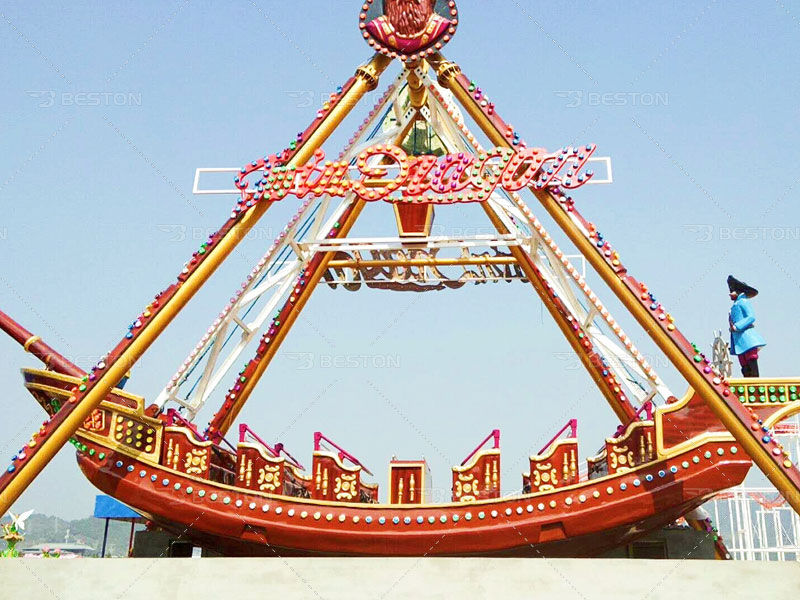Harmonizing Thrill and Terrain: The Integration of Park Ride and Natural Environment
- Beston Amusement Rides

- Jul 9
- 4 min read
In modern amusement design, a compelling shift is underway—one that fuses engineered exhilaration with ecological sensitivity. The integration of park ride and natural environment transcends traditional boundaries, positioning outdoor entertainment not merely as spectacle, but as a holistic experience embedded in landscape.
The Evolution of Ride Placement in Natural Contexts
Historically, amusement attractions occupied flat, barren expanses, optimized for infrastructure, visibility, and visitor flow. However, the demand for immersive, environmentally-attuned experiences has transformed this approach. Designers are now pursuing topographical and botanical harmonization, embedding attractions such as swing amusement ride and pirate ship ride for sale into valleys, clearings, and forested slopes.

This alignment with terrain is not purely aesthetic. It provides passive climate control, reduces artificial construction requirements, and heightens visitor perception. A pirate ship ride, for instance, oscillating in a forest hollow, amplifies both suspense and serenity by surrounding the motion with verdant stillness. Trees act as sound buffers and wind breaks, enhancing ride stability and comfort.
Environmental Symbiosis and Engineering Challenges
Merging rides with nature requires precise engineering. Load-bearing elements must comply with uneven ground. Soil composition, root systems, and hydrology become active constraints in foundational planning. Modular support systems have emerged as a solution—prefabricated steel frameworks that can be anchored with minimal soil displacement.
Swing amusement ride installations, in particular, demand both vertical clearance and unobstructed arcs. When nestled in groves or canyon walls, these rides must incorporate compact pivot systems and adjustable tension cables to ensure safe and fluid motion without compromising surrounding vegetation.

Further, ride manufacturers increasingly offer environment-compatible options. A pirate ship ride for sale may include chassis modifications to follow curved topographies or solar-compatible drive mechanisms to reduce energy imprint.
Visual Continuity and Scenic Coherence
Beyond structural adaptation, visual integration plays a pivotal role in blending artificial structures with organic surroundings. The goal is seamlessness—not camouflage, but cohesion. Using materials such as weathered timber, corten steel, and non-reflective finishes allows rides to echo the textures and tones of the natural world.
Color palettes draw from surrounding biomes. A swing amusement ride sited near a pine grove might employ sage and bark tones, while one beside a coastal bluff might favor sand and slate. These choices reduce visual intrusion and foster a unified aesthetic language between nature and engineering.
Scenic designers also introduce native flora around loading zones and queuing areas, creating microhabitats and mitigating the ‘hardscape’ effect. In doing so, pathways to attractions become interpretive trails rather than mere conduits.
Acoustic and Atmospheric Calibration
Ambient sound management is another frontier in ride-environment integration. Many parks now prioritize natural acoustics over piped-in music or mechanized noise. Ride mechanisms are acoustically dampened, utilizing rubberized couplings, sound shields, and silent drive trains. This approach preserves wildlife corridors and enhances human sensory awareness.
For example, the whoosh of a swing amusement ride in a quiet forest clearing can take on an almost poetic quality, its cadence resonating like a pendulum within nature’s own rhythms. Visitors report deeper relaxation and a stronger connection to place.
In tandem, atmospheric cues—mist emitters, lighting diffusers, and olfactory enhancers—simulate environmental transitions. As guests approach a pirate ship ride nestled in a lakeside thicket, the air might subtly smell of cedar and brine, while soft mist conjures the illusion of maritime fog.
Economic and Ecological Value of Integration
Though integration demands higher initial investment and complex planning, it yields long-term dividends in sustainability, brand distinction, and guest retention. A park offering a pirate ship ride for sale with eco-conscious placement can command premium pricing and positive public relations.
From an ecological standpoint, integration supports biodiversity. Shade structures double as bat habitats; ride foundations incorporate green roofs or rainwater collection systems. These symbiotic design elements reduce the environmental burden often associated with large-scale leisure operations.
Moreover, data indicates that parks practicing natural integration enjoy longer visitor dwell times, higher satisfaction ratings, and stronger return rates. Guests increasingly seek experiences that balance thrill with tranquility, motion with mindfulness.
Case Studies and Applied Innovation
Several international examples illustrate this synthesis. In Scandinavia, a cliffside park integrates a swing amusement ride into a fjord-facing ledge, offering panoramic vistas and minimal land disturbance. The ride’s supports are embedded into pre-existing rock fissures, preserving root systems and reducing runoff.
In East Asia, a forest park features a pirate ship ride swinging between ancient banyan trees. The ride’s deck is constructed from locally-sourced bamboo composites, and its motion sequence is synchronized with natural light cycles to enhance immersion.
These implementations demonstrate not only technological ingenuity but philosophical commitment—to respect place, prioritize coexistence, and redefine what amusement can mean in the age of ecological urgency.
Toward a Biophilic Future in Amusement Design
As climate consciousness reshapes industries, amusement parks are re-evaluating their spatial and environmental responsibilities. The integration of park ride and natural environment is no longer niche—it is imperative.
Designers, engineers, and operators must embrace a biophilic approach: one that places nature not as a backdrop but as a co-creator. Whether offering a swing amusement ride that arcs through dappled sunlight or marketing a pirate ship ride for sale embedded in a rewilded estuary, the future of amusement lies in thoughtful, place-based design.
Ride by ride, this approach promises more than amusement. It delivers resonance—a remembered feeling that the exhilaration of motion can live in balance with the stillness of earth.



Comments